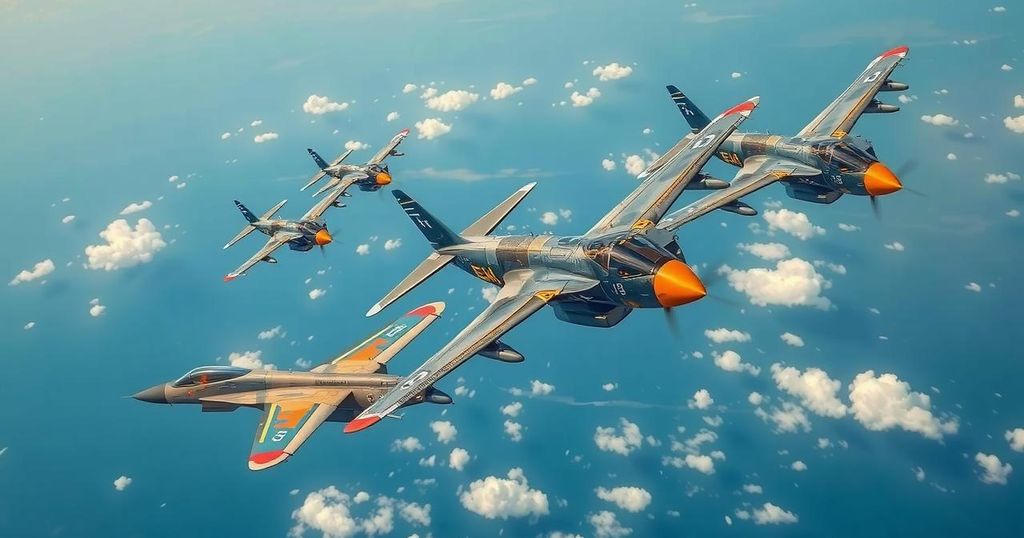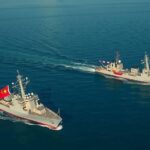U.S. and Philippines Conduct Joint Air Power Drills Amid China Tensions
The U.S. and the Philippines conducted a joint air power drill over the Western Pacific to enhance military readiness amid rising tensions with China. The exercise showcased cooperation that reinforces their mutual defense treaty and highlighted the need for a free and open Indo-Pacific region, addressing concerns over China’s maritime claims in adjacent waters.
On Tuesday, the United States and the Philippines conducted a joint air power training exercise over the Western Pacific Ocean, emphasizing their mutual defense collaboration amid rising tensions with China. This drill involved showcasing varied jet capabilities above the Philippine Sea, reinforcing the nations’ commitment to maintaining a free and open Indo-Pacific region. According to the U.S. Air Force, this mission not only enhanced operational readiness but also demonstrated the interoperability of the allied air forces involved.
The Chinese Foreign Ministry recently expressed that any defense cooperation between the Philippines and the United States should not undermine the interests of any third parties. This statement comes at a time when disputes over maritime claims in the South China Sea are escalating, particularly regarding China’s aggressive territorial assertions against the Philippines. Manila has indicated its interest in acquiring a ground-based, mid-range missile system from the United States, capable of striking targets with a range of up to 290 miles, reflecting its strategic military enhancements within the regional security framework.
China’s military boasts the largest aviation force in the Indo-Pacific, with approximately 2,400 combat aircraft. As part of its naval strategy, China has been expanding islands in the South China Sea through land reclamation and establishing military outposts equipped with runways. The Philippines plays a critical role in the U.S. defense strategy as part of the first island chain, which aims to constrain Chinese military operations. Recent exercises featured both American F-16s and Philippine FA-50 jets, with the former being particularly noted for their agility and combat readiness.
Images released by the U.S. Air Force illustrated two F-16 fighters from the 77th Expeditionary Fighter Squadron alongside two Philippine FA-50s during the training operation. The U.S. squadron, currently stationed at Shaw Air Force Base, exemplifies the United States’ continual tactical presence in the region, specifically at Kadena Air Base in Japan. This location serves as a strategic hub for the U.S. military, enabling rapid response and support for allied nations while serving as a deterrent against aggression in the Indo-Pacific theater.
The joint air power drill performed by the United States and the Philippines is part of a broader strategy to enhance military cooperation amid ongoing tensions with China. The Philippines, being the oldest treaty ally of the U.S. in Asia, has been vocal about its defense needs, particularly in the context of escalating conflicts in the South China Sea. As China continues to assert its maritime claims, the Philippines aims to bolster its defense capabilities, including the potential purchase of advanced missile systems. These developments reflect a shift in regional power dynamics and a commitment by the U.S. to maintain security and stability in the Indo-Pacific region.
The recent air power exercises between the United States and the Philippines underscore the growing collaboration aimed at ensuring regional security amid rising tensions with China. Such joint operations not only enhance military readiness but also signify the long-standing alliance between the two countries. The Philippines’ ongoing discussions regarding military acquisitions further illustrate its commitment to bolstering its defense infrastructure in the face of external threats, particularly concerning aggressive maneuvers by China in the South China Sea.
Original Source: www.newsweek.com








Post Comment